Batch jobs are a convenient way to process resource-heavy tasks without locking up a client session. Most batch jobs are single-task executions initiated from a Periodic menu item. However, a user can also manually configure a custom batch job with multiple tasks and conditions to create complex batch flows.
As an example, we will create a custom AIF processing flow, illustrated in the following flowchart. In summary, we will retrieve our XML files and process those inbound files. Depending on the results of the inbound processing, we’ll either proceed to process outbound files, or output error response files. Additionally, when outbound processing completes, we’ll also output response files.
Keep in mind that the business logic behind each individual task is not important, and the main idea of this exercise is to control the flow of execution as each task completes. The screenshots that follow are from Microsoft Dynamics AX 2009, but this configuration also applies to Microsoft Dynamics AX 2012.
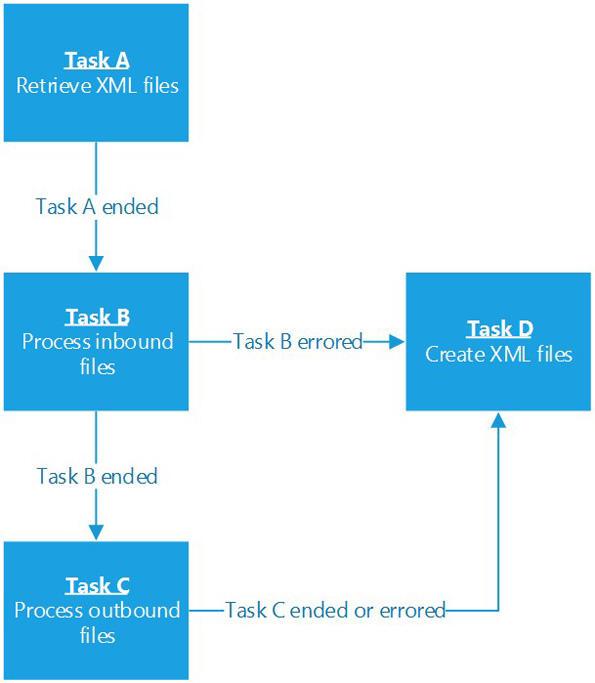
Batch Tasks
Basic > Inquiries > Batch job
To start, we’ll create a new empty batch job, by creating a Batch job record. Then we’ll use the View tasks button to add tasks in the Batch tasks form.

We add each task as a new record in the Batch tasks form. Each of these tasks is a RunBaseBatch class already capable of running on the batch server. The lower Has conditions grid lists the conditions that must be met before the highlighted task can execute. Tasks are specified in the condition record by their Task Id, so good Task descriptions are recommended for complicated batch flows.
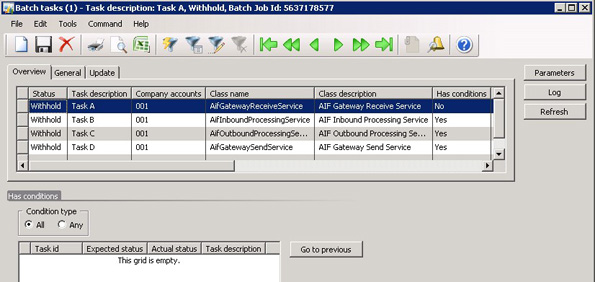
Task A – AIF Receiving
This task retrieves the AIF XML files from a file directory.
No conditions: Task A is the first task in the flow, no conditions are needed. Because this task has no conditions, there is nothing preventing it from starting when the batch job executes.
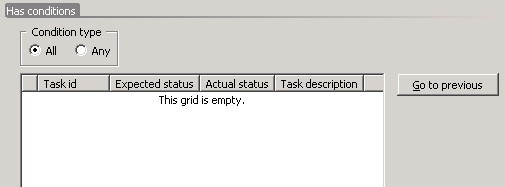
Task B – AIF Inbound Processing
This task processes any inbound files that were retrieved in Task A.
Execute if Task A ended: Task B will only execute after Task A completes with the Expected status of “Ended”.
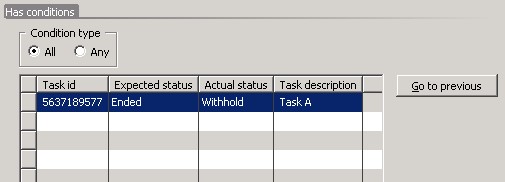
Task C – AIF Outbound Processing
This task processes the outbound portion of AIF.
Execute if Task B ended: Task C will only execute if Task B completes with the Expected status of “Ended”.
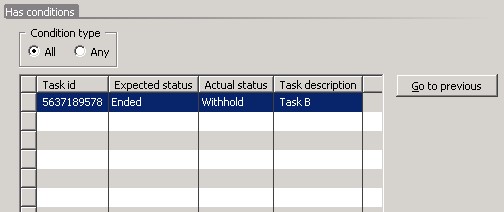
Task D – AIF Sending
This task outputs queued outbound files to a file directory.
Execute if Task B errored: Task D will execute if Task B completes with the status of “Error”. This would happen if an exception is thrown in the business logic of Task B.
Execute if Task C ended or errored: Task D will also execute if Task C completes with either the “Ended” or “Error” status.
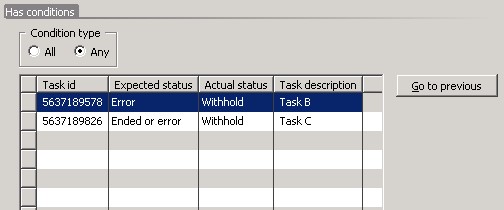
Notice that the Condition type is set to “Any”, which means Task D will execute if either of the above two conditions are met.
With the batch job configured as described above, we were able to functionally control the execution of tasks and add logic to our batch job without writing any code. Utilizing conditions on batch tasks further extends the utility of the Dynamics AX batch framework, and helps businesses attain more value from their ERP.

 RSMUS.com
RSMUS.com